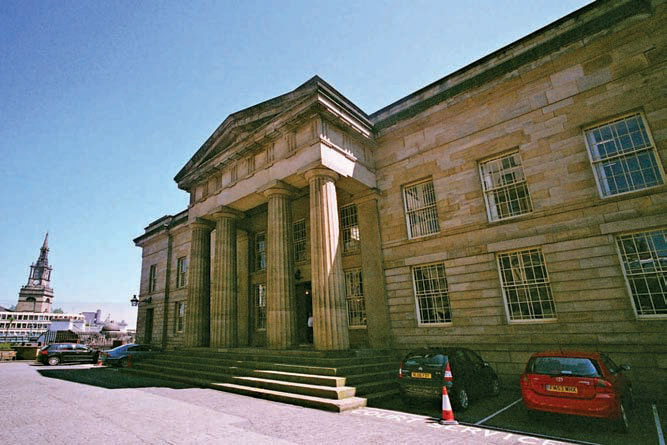Moot Hall
The Grade I Listed Moot Hall was built in 1811 to replace the medieval Moot Hall as the County Court. Traditionally a moot hall is a meeting place or assembly building, particularly for
deciding local issues.

The Grade I Listed Moot Hall was built in 1811 to replace the medieval Moot Hall as the County Court. Traditionally a moot hall is a meeting place or assembly building, particularly for
deciding local issues.
The Moot Hall, along with the Castle Keep and the Cathedral Church of St. Nicholas, played a key role in the keeping of justice in Newcastle through the ages. The Cathedral was used as the County Assizes court for two years when the Old Moot Hall was demolished in 1810. The Castle Keep was used as the county gaol for many years.
The entrance is up a broad flight of sandstone steps and Grecian portico to the entry hall and magnificent staircase beyond, leading to a balcony on the first floor. The chandelier lit Grand Jury Room has splendid views over the River Tyne and its bridges. Two traditional oak courtrooms dating from 1875 have trapdoors in the docks leading down to the cell area with original studded doors and shackle rings. Both courts have Judges benches with oak canopies and extensive public galleries.
Described on completion as the most perfect specimen of Doric architecture in the North of England, the Moot Hall has columned porticos at the front and rear.
Still used as a court room from Monday to Friday it is not normally open to the public. Facing the Moot Hall is the12-storey, Manhattan style, Northumberland County Hall (now the Vermont Hotel), built in 1910. A Grade II Listed building it was, until 1974, a detached part of the County of Northumberland.
Nearby is the three-storey Bridge Hotel. It is an attractive, Grade II Listed, Art Nouveau public house, built around 1899 with spectacular views of Robert Stephenson’s High Level Bridge.